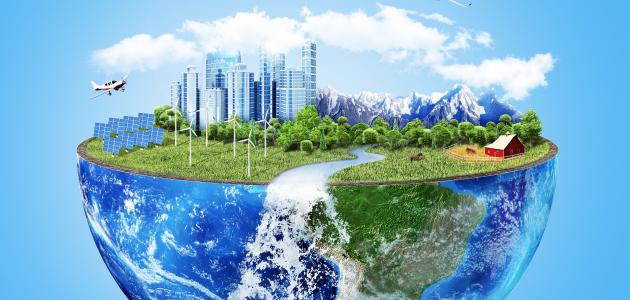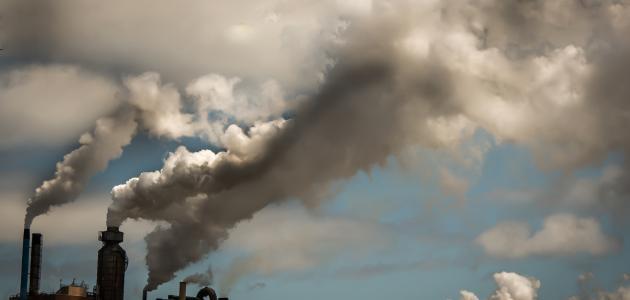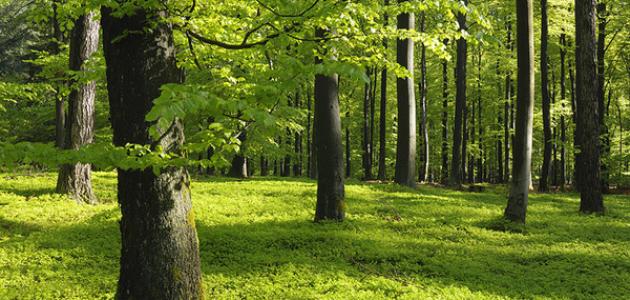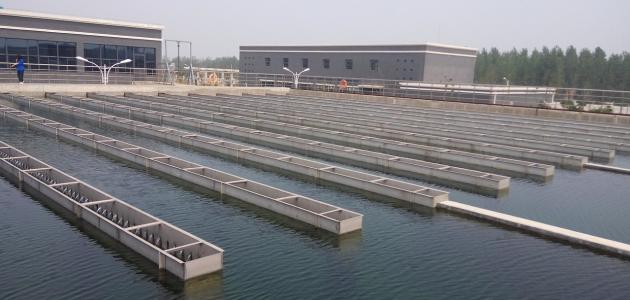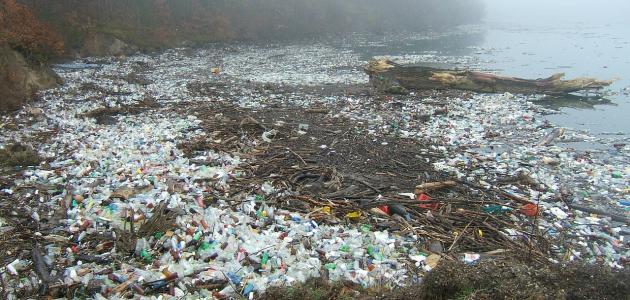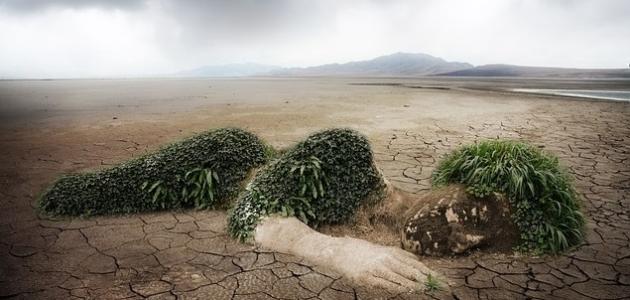Ecosystem change
An ecosystem consists of all the natural elements present in a particular environment, which are linked to each other through specific relationships. All ecosystems face natural shifts in the extent of the diversity and abundance of living organisms. Biodiversity is not constant in the environment even without human-made change, but human activities Which causes a change in the ecosystem and climate on the planet, making preserving biodiversity a challenge. To face this challenge and develop plans to protect biodiversity in light of these rapid changes, the way the environment responds to new conditions must be understood.
Ecosystems are made up of living organisms; Such as plants, animals, and non-living components; Such as air, water, soil, and rocks. There are many types of ecosystems to include forests, grasslands, wetlands, lakes, river deltas, and others. It is worth noting that these ecosystems change under the influence of natural events and processes that may have a direct impact, such as harsh climatic conditions. Such as hurricanes, snow storms, and the movement of animals in search of new areas to live, and their dependence for their food on hunting from the resources of these areas, which contributes to the reduction of plants and animals present in them, as the behavior of predatory animals is a natural event, but it can nevertheless change the ecosystem. In addition to the above, humans may also directly affect ecosystems. Human introduction of new species of plants and animals into a specific ecosystem can cause the destruction of this system.
Read also:How do we keep the beach clean?
Causes of ecosystem change
The ecosystem changes as a result of natural factors and unnatural, man-made factors. These factors are divided into direct and indirect factors. Direct factors clearly affect the processes of the ecosystem, examples of which include changing the habitats of living organisms. Indirect factors have a broader impact. Of the direct factors, it may cause a change in one or more of the direct factors, an example of which is population change.
Direct factors
Direct factors include habitat change, climate change, invasive species, overexploitation of environmental resources, in addition to pollution, and the severity of these factors may increase in most ecosystems. Below are some of the most important direct factors that affected the ecosystem during The last fifty years:
- Land cover change in terrestrial ecosystems: (Terrestrial Ecosystems), due to the conversion of a lot of land into agricultural land, and the application of modern agricultural techniques to it to increase the supply of food and wood. As for the areas that are not suitable for agriculture, such as deserts and northern forests, humans have not affected or transformed them.
- Change of marine ecosystems due to fishing: (Marine Ecosystems), approximately half of the marine fish stocks designated for commercial fishing have been exploited, and the impact of fishing has extended until it reaches the oceans, after it was limited to coastal areas only.
- Water change in freshwater ecosystems: (Freshwater Ecosystems), changes may occur in water systems due to the construction of large dams, or as a result of invasive organisms that could result in the extinction of some species, or due to pollution that may occur for several reasons, including an increase in the level of nutrients in the water.
Indirect factors
There are five indirect factors that affect ecosystems:
Read also:Causes of food contamination- Population change: It includes population growth and population migration. The world’s population has doubled in the past forty years, and most of the population growth was in developing countries. However, the rates of population growth in some developing countries at the present time are very low, while some developed countries with high income are witnessing rates High population growth due to immigration.
- Change in economic activity: Global economic activity has increased nearly seven-fold in the past fifty years, and as per capita income grows, consumption patterns change, and demand for many ecosystem services, industrial goods and services increases.
- Social and political factors: It includes decision-making processes and the extent of public participation in them. There has been a trend towards empowering local communities, and the proportion of international environmental agreements has increased in recent years.
- Cultural and religious factors: Culture is the values, beliefs, and standards shared by a group of individuals, and determines their view and perception of the world. It also provides principles that can have an important impact on the ecosystem, such as the consumption behavior of individuals.
- Science and Technology: The tremendous progress in science and technical applications has contributed to increasing agricultural production, but in return it has led to a deterioration in ecosystem services. For example, progress in fishing techniques has contributed significantly to the depletion of marine fish stocks.
The response of living organisms to environmental change
Human-induced changes to ecosystems can have significant impacts on animals, plants, and microorganisms, such as humans introducing pathogens or alien invasive species into the ecosystem, adding toxic substances or excess nutrients, or causing climate change, changing diversity The biological system, the food chain, and entire ecosystems, and living organisms respond to these changes in different ways, some of which are as follows:
Read also:Factors affecting atmospheric pressure- Decreased or excessive numbers of organisms: Some organisms may respond to environmental change by decreasing their numbers, and this may lead to the extinction of some species, while on the other hand, the numbers of other organisms may increase excessively, causing a problem. For example, an excess of nutrients or high air temperatures may stimulate the proliferation of harmful algae.
- Rapid evolution of some living organisms: Freshwater organisms may respond to environmental change through rapid development, and the shorter the period between generations, the faster these developments will appear. For example, small plankton, which are available in large numbers in the seas, may adapt to the changing environment within a few years, because the duration of each generation’s survival Some of them survive for only a few days, as fish and other animals feed on them, and this rapid development is called evolutionary rescue. Because it preserves these organisms from extinction when their environment changes, and it also plays an important role in the success of invasive organisms when they enter a particular ecosystem, in addition to preserving the ability of local species to continue with changing environments. Therefore, it is important to measure the importance of this rapid development, and to predict when Its occurrence, and the consequences.[
- Changing the timing of life cycle events in some organisms: Climate affects the main stages of the seasonal life cycle of many organisms, such as: migration, flowering, and reproduction. With the change in the length and intensity of the seasons of the year, the timing of these stages changes for some organisms in some regions. For example, the early arrival of spring in a certain region may cause early nesting. For about 28 species of migratory birds, 16 of the 23 species of butterflies in other parts of the world changed the timing of their migration, and due to the differences between organisms in their ability to adapt, it results in a difference in the timing of migration and reproduction between them.
